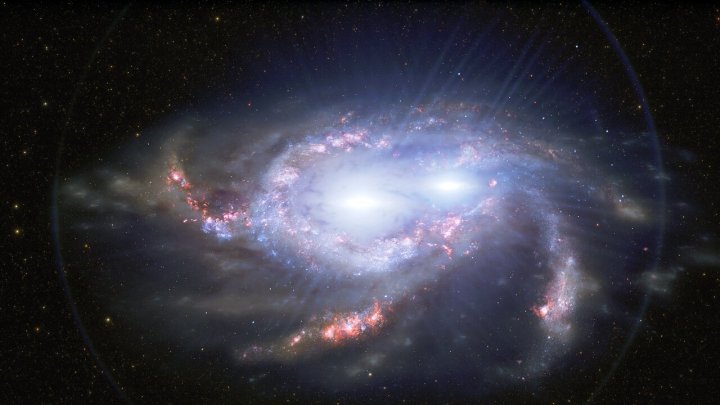
When galaxies get close enough together, they can collide in epic events which can destroy one or lead to the two merging into a larger galaxy. And sometimes, on very rare occasions, the two galaxies might both include a quasar — an extremely bright galactic core formed around a supermassive black hole, so luminous it can shine brighter than the entire rest of the galaxy.
Now, a new study has identified not one but two pairs of quasars in galaxies that are merging. By studying these two pairs, which are extremely far away and are thus around 10 billion years old, astronomers can learn more about how galaxies and their supermassive black holes merge.
“We estimate that in the distant Universe, for every one thousand quasars, there is one double quasar. So finding these double quasars is like finding a needle in a haystack,” said Yue Shen of the University of Illinois at Urbana-Champaign, lead author of the paper, in a statement.
Astronomers believe that quasars were more common around 10 billion years ago, and there were many galactic mergers happening. That means it’s more likely to find pairs of quasars from this particular period.
“This truly is the first sample of dual quasars at the peak epoch of galaxy formation with which we can use to probe ideas about how supermassive black holes come together to eventually form a binary,” said research team member Nadia Zakamska of Johns Hopkins University.
The researchers discovered the pairs of quasars using the instruments including Hubble Space Telescope and the Gaia space observatory. The quasar pairs are so close together they appear to be one object until the researchers looked closer using Hubble.
Now astronomers will be able to use these pairs to learn more about the formation of galaxies. “Quasars make a profound impact on galaxy formation in the universe,” Zakamska said. “Finding dual quasars at this early epoch is important because we can now test our long-standing ideas of how black holes and their host galaxies evolve together.”
Editors' Recommendations
- Biggest stellar black hole to date discovered in our galaxy
- Hubble images a pair of galaxies caught in the process of merging
- Hubble captures a formation of galaxies neatly lined up
- Hubble observes a galaxy that hosted an epic supernova explosion
- Hubble image shows a lonely star glowing over an irregular background galaxy



